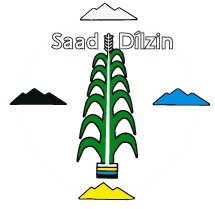Content Questions
Content questions are used to ask someone to supply missing information (so as to make a certain proposition true). These questions have an h-word in them in Navajo. For example, Mary ha’át’íí nayiisnii’? (‘What did Mary buy?’) presupposes that Mary bought something, but the identity of the thing she bought is missing; the speaker asks for that information:
Grammarians sometimes refer to English content questions as WH-questions, because these questions contain the wh (or h…w) words who, what, when, where, how, or why. The Navajo counterparts to most of these words begin with h, so they are often called h-words (but díkwíí is also a content question word). The h-words are underlined in the example above and those below:
In some regions, people use d instead of h in content question words.
Examples (2), (3), and (4) include three question particles, lá, -sh, and -shą. These are glossed as Q. In English, words and phrases are emphasized by stressing them. In Navajo, the emphasis is generally carried out by adding a particle after the constituent (phrase) that is being emphasized. The question particles -sh and lá are used to focus on a phrase; -shą’ indicates a topic. When question particles appear, they frequently appear just after the h-word or cliticize to it, although they can appear in other places. In the example below, ńléí’asdzą́ą́ sání (‘that old woman’) is the topic and bears the enclitic -shą’, while the h-expression follows it:
| Ńléí | ’asdzą́ą́ | sáníshą’ | háí | ’át’į́? |
| there | woman | old-Q | what | 3-be.N |
| Who’s that old lady over there? | ||||
Finally, note that the content question enclitic -sh is not the same as the yes/no question enclitic -ísh.




